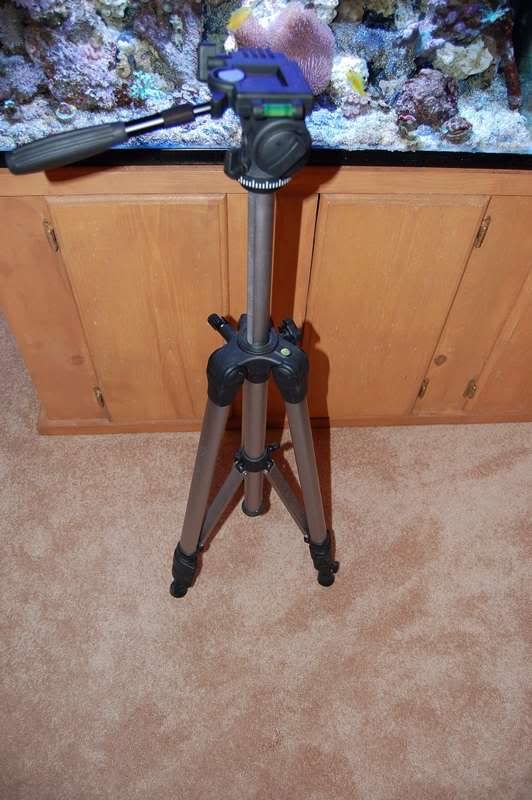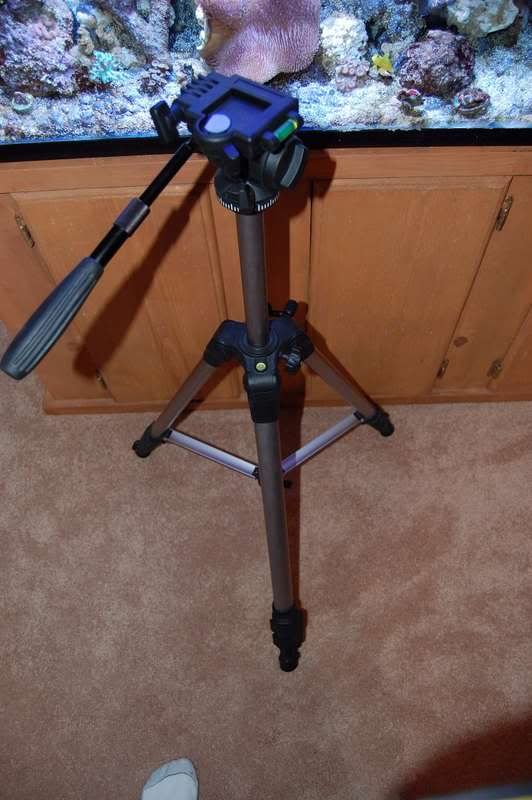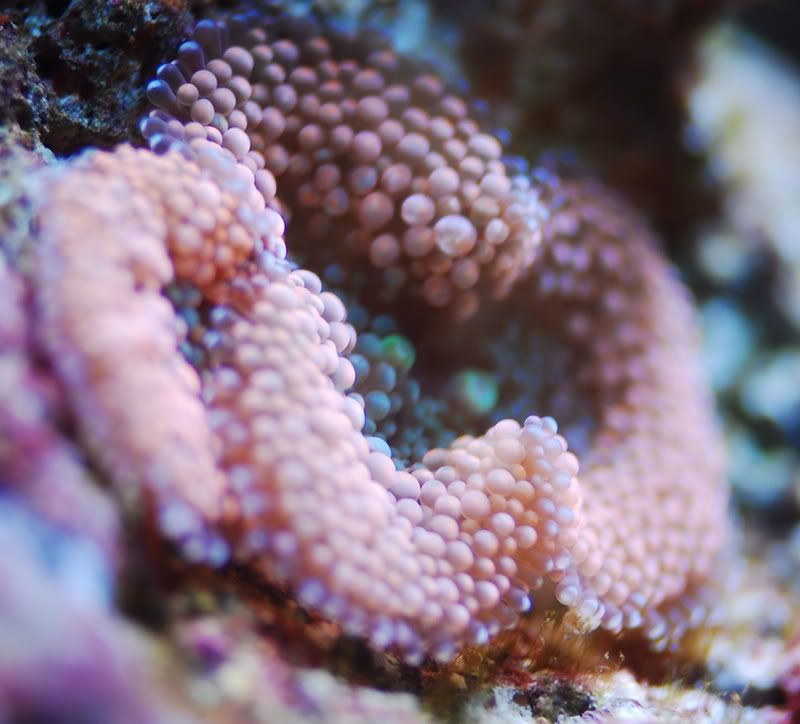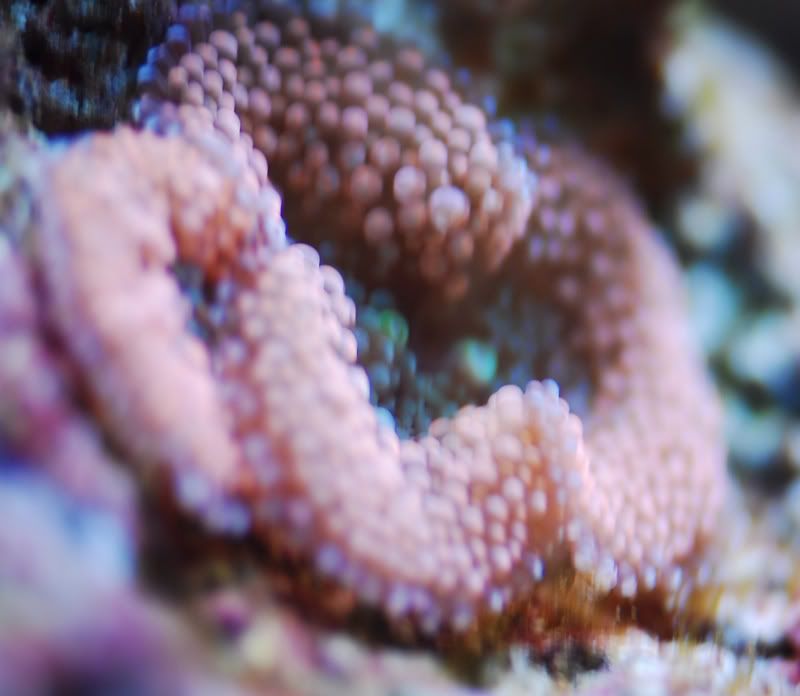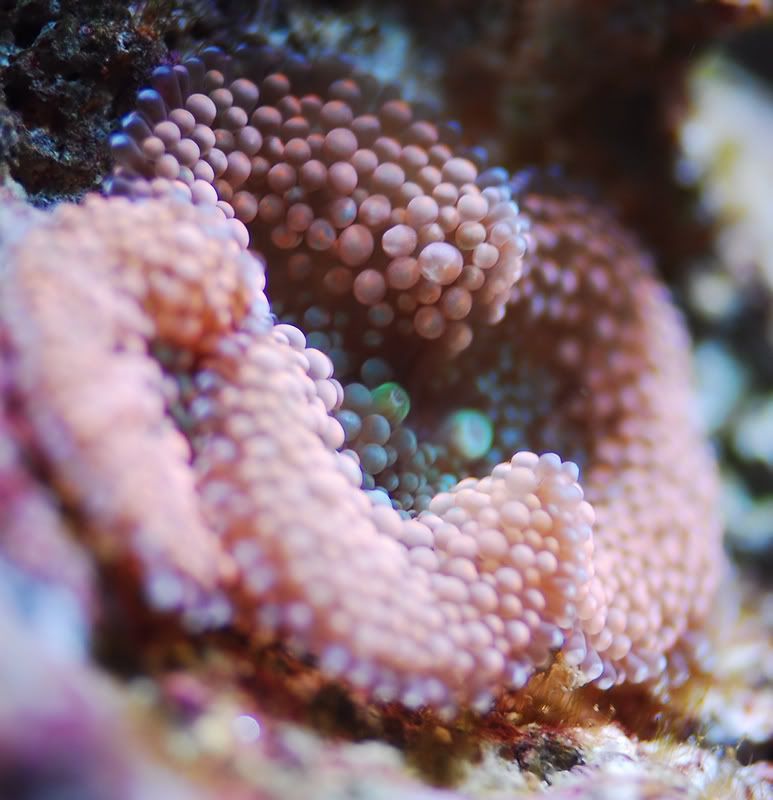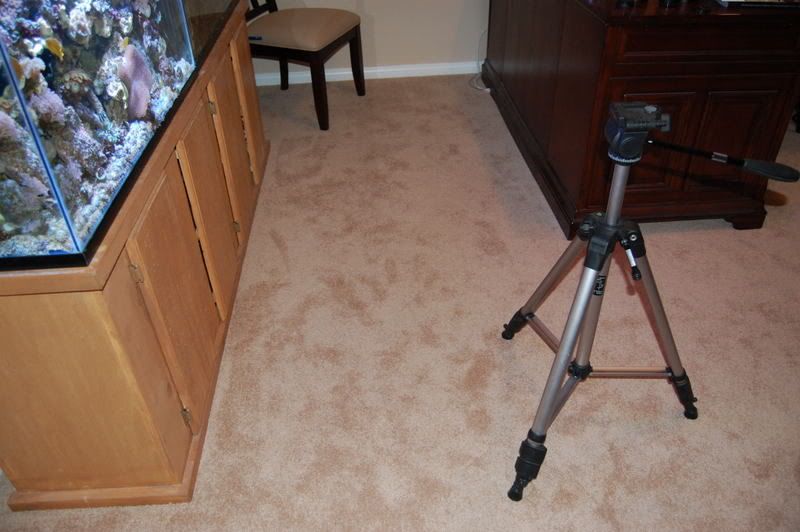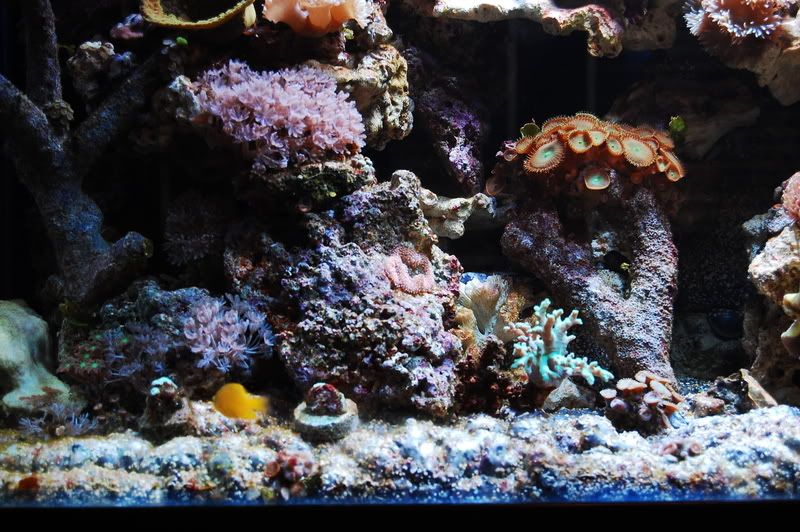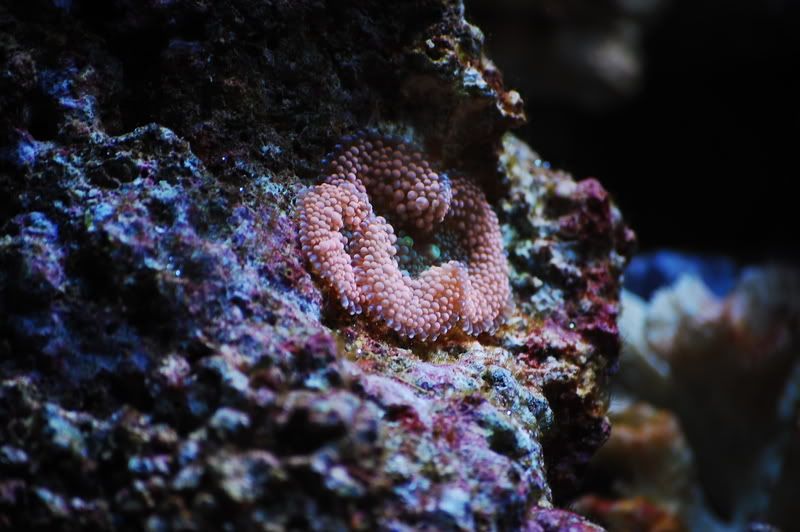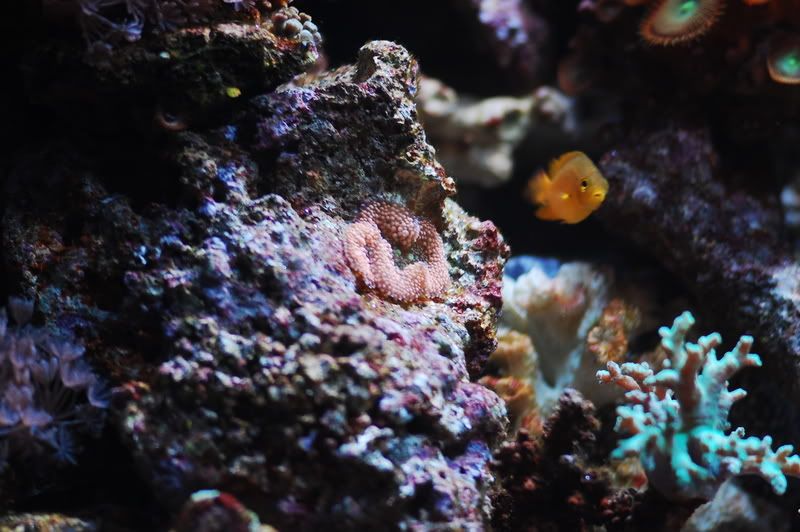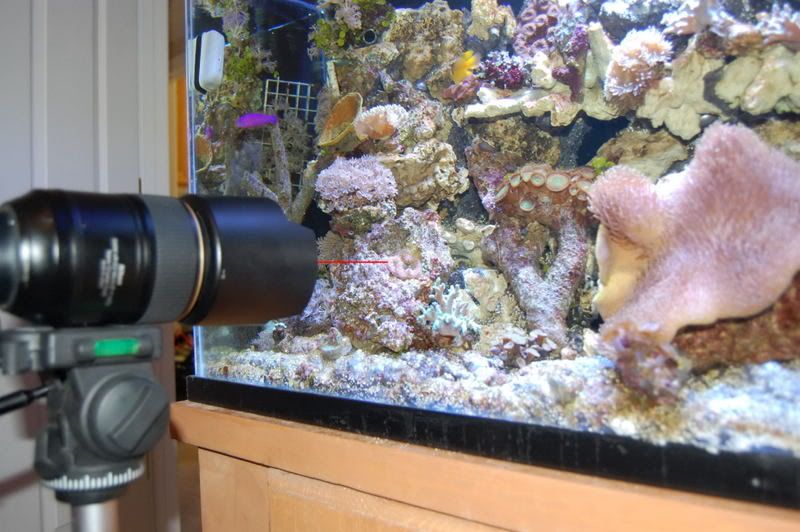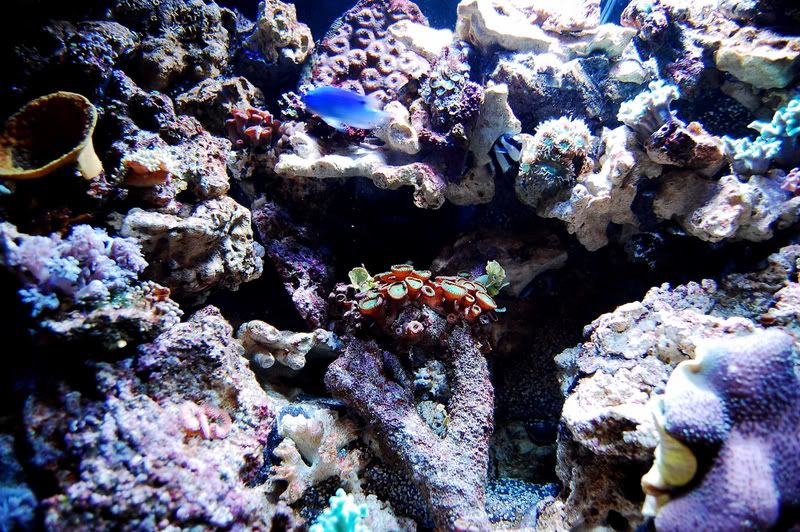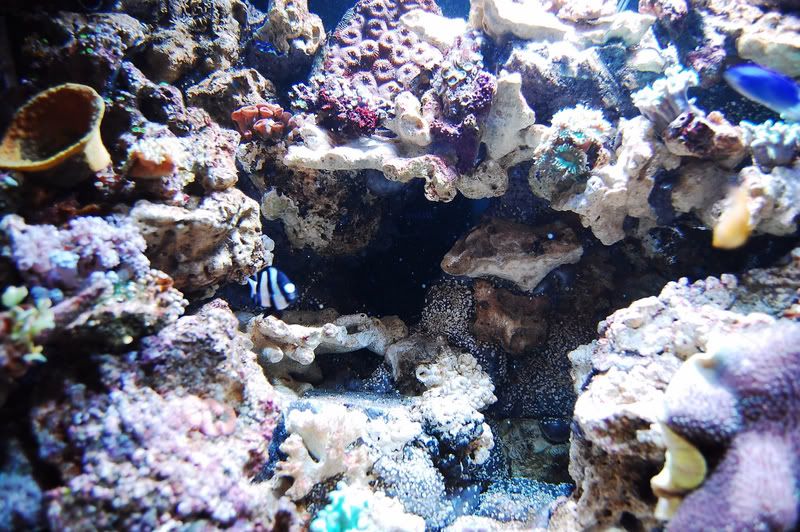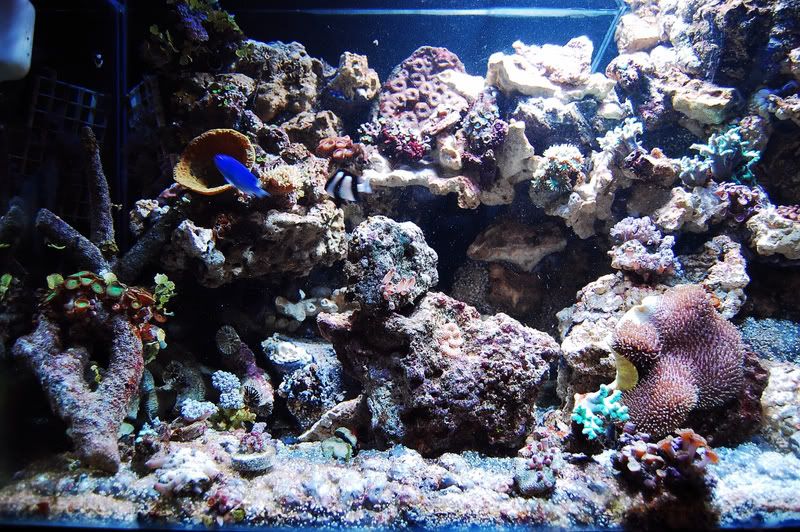Staging the tank
This is a fairly simple procedure, I keep what I call the "sweet spot" in my tank free of any background items, back wall is clean of coraline algae, rock outcrops, misc algae etc... I just want a clean, black background so that the coral colors pop, this area is not very big, maybe 4" around and I've arranged the LR so that I have a flat area to place the corals. I also have another area that has a live rock background, I do this so that I have a choice of backgrounds depending on the corals and what will make the image look the best
This area is also almost directly under the MH's and slightly to the left, it's about mid water level and about 14" away from the lights, any closer and the lighting is just too bright and tends to washout the colors.
Sometimes I stage the corals the night before as they tend to close up and it takes them to expand. Sometimes it will take half a day to arrange a shot, fish, crabs etc will sometimes knock things over and then you have to start the waiting game again.
I also will move my light fixture back and forth to change the light pattern on the corals, this can make a huge difference. Usually the best lighting is when the light footprint is infront of the coral.
This is the staging area, right now there is a piece of tonga branch with some
paly's. I posted images of this photo shoot in my "New Macro's thread, so you can see the black area is really small
Now it's time to rearrange the area, clean all the props rocks and get it ready for the next shot's. The tonga is gone and you can see the flat area.
Sometimes I have to use a small rounded rock on the flat area inorder to create the right "look" or to cover a blank area. There are also several corals in this image that I'll be moving to other areas. The ORA Duncans in the upper right side, will be moved to the left upper side so that they are farther away from the lights, I tried to shoot them on the right side, but the lighting was too bright.
You can also see in the bottom left side, the large rock that has the ric, I've been using in this series, part of the problem of where it's at is that the ric is tilted away from me at a 45 degree angle, this creates depth of field problems, so i'll have to postition the rock so that the rick is flat, facing me.
Now I've got the rock in just about the correct spot, I'll have to do a series of test shots to see if the depth of field is good and make adjustment accordingly.
Once I got the rick rock positioned, I noticed that there was a nice, flat shelf on top of the rock and decided to place another rock on top that has some awesome green and orange cloves....LOL then I found that, that rock had an nice area for some zoa's on top of it, so now I've got 3 rocks stacked on top of each other...
Now I've got the ORA Duncans, moved over and will have to wait for them to open up, they are usually really slow...


